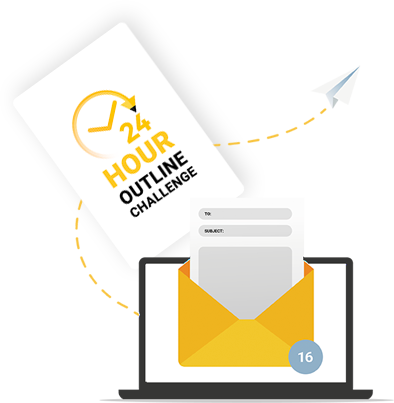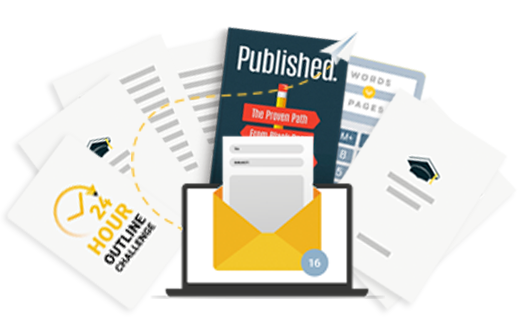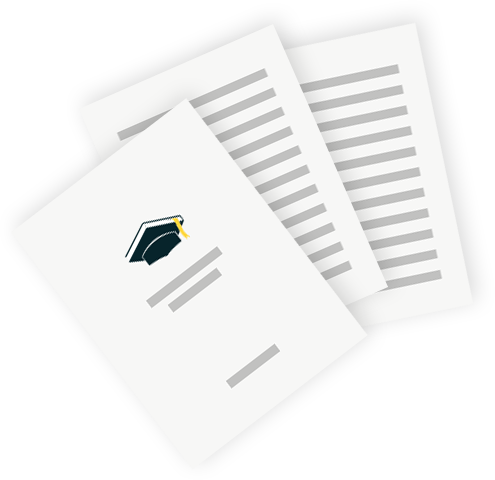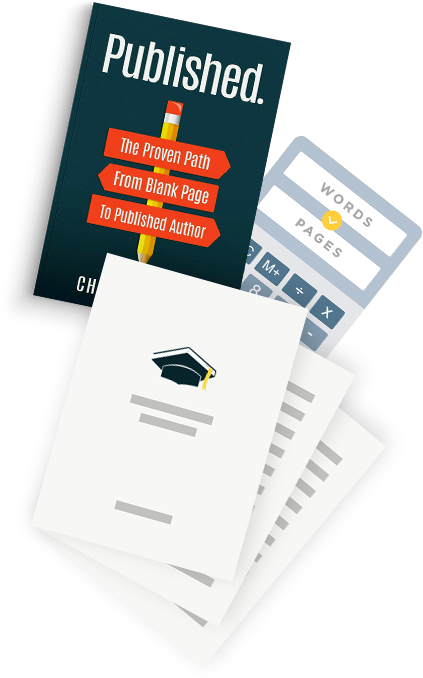Short stories have been historically seen as a lesser form of prose, favoring novels and longer pieces. But, PLOT TWIST, short stories are THE BEST!
Not only are they fun to read, but they’re an amazing form for writers to learn with. It’s quicker to get feedback turnaround, and easier to focus on specific writing skills in a short story, as opposed to a full-length book.
One form of short story is flash fiction.
Let’s look at what a flash fiction is, what it’s made of, and how to write flash fiction utilizing imagery, brevity, and editing!
What is flash fiction?
A flash fiction is a short story that is typically under 1,500~ words. Very small flash fictions (under 75~ words) are called micro fictions. One of the most well-known flashes is the micro fiction: “For sale: baby shoes, never worn.”
Flash is a fun format to write, because it’s a real challenge to fit a plot or character arc into such a small space.
Writing flash teaches the importance of making every word the most impactful it can be, so practicing with flash fiction will improve your writing in all forms.
Here’s how to write flash fiction
The main elements of a flash fiction are the length, the character, and a bit of a twist at the end.
Length of flash fiction
Length is obvious. The whole point of a flash fiction is that it’s short, very short. Flash fiction can be as short as a sentence if you want.
Character in flash fiction
Again, character is obvious. Characters are the core element of any story. Since this type of fiction is really short, the characterization will really be developed through very concrete imagery of that character’s perspective.
Twist in flash fiction
By “twist,” I mean the ending should be very impactful, and usually surprising. Your last line should be a bit of a stab to the heart.
Most flash fictions are going to be sad or tragic because, for the tiny space to have any meaning, it has to carry a very big emotion, but you can utilize any themes or emotions you’d like.
The Elements of Flash Fiction
Let’s break down five elements of flash fiction to gain a deeper understanding.
Not necessarily all stories need every one of these, and you can probably add several to the list, but these five are a great starting place if you have no idea where to begin formulating a flash fiction.
- Emotion – what do you want your story to make your reader feel?
- Character – who is your story about?
- Imagery – what strong, iconic imagery will your story use?
- Inciting incident – where will you start your story? As with all fiction, start late and end early. Start in the middle of your story. Maybe show something strange your character is doing to spark interest.
- Hook ending – what will your twist be?
To help you visualize these elements a bit better, I’ve broken down one of my own flash fictions from Little Birds.
- Emotion – tragic sadness/regret
- Character – an older woman who lives alone
- Imagery – dark, drudgey, dead animals, rundown house
- Inciting incident – woman collecting roadkill
- Hook ending – let’s read the story and see what happens!
You can see those elements and how they’re used in this story. The twist ending was that she collects dead animals to give them proper burials to console herself about not being able to bury her infant son after he burned in a house fire.
Writing Briefly
The main point of flash fiction is that it’s short–that’s what makes it flash. Writing in a small space is a big challenge. Earlier, I mentioned the six-word story about baby shoes.
That’s a micro fiction.
A couple other examples of micro fictions are:
Dandelions, Actually
He showered her with roses, but never asked her favorite flower.
–R. Gatwood
Love is Forever
We came around the corner and there they were: young lovers, hands clasped. I drew the outline, Joe directed the crowd.
–Merrilee Faber
You can see from these examples that the titles of micro fictions can bring a lot to the story, so keep that in mind.
Your first impression might be that writing micro fiction is easier than writing longer flash fictions, but it’s probably the opposite. It’s often harder to fit a story into twenty words than into 300 words.
So how do we cut down words to make flash fiction?
- Use strong nouns and better verbs rather than excess adverbs and adjectives.
- Be critical of adverbs and adjectives. There’s nothing necessarily wrong with adverbs and adjectives, but you should make sure they’re necessary. If the adjective or adverb explains something that the word it’s modifying already implies, it’s not necessary. For example, if you write, “a quiet whisper,” the adjective “quiet” doesn’t bring anything to the noun “whisper”. All whispers are quiet. But “a harsh whisper” does bring something to it–not all whispers are harsh.
- Edit for redundant phrasing and concepts. Here’s a video about words, phrases, and scenes you can cut from your writing.
- Cut most of your articles. Articles are a, an, and the, and they are almost always unnecessary. Amateur writers tend to slip in unnecessary articles without even noticing, so cut an article and read the sentence out loud. If it still makes sense, leave it out.
Use Imagery in your Flash Fiction
Using imagery in your writing means writing tangibly with the five senses. Instead of just describing sights and sounds, you can get a little more into it with smells and tastes and feelings, you can combine and cross them, and you can work on using relatable imagery.
When you use imagery of something familiar to someone, it will elicit certain emotions from them.
For example, if someone had a younger sibling and you describe the smell of baby powder in a story, that’s a very strong olfactory memory, and they’ll likely have memories of their childhood.
If there’s a new baby in the house, what do older children typically feel? Usually either happiness or jealousy. So depending on how you frame it and use tone, you can purposely make certain readers feel something you want them to feel.
The easiest way to practice writing imagery is to show instead of tell. This is one of the strongest writing skills you can develop. Once you really understand what this means, your prose will improve. Showing is especially important in shorter pieces because every sentence and word has to carry more weight.
Telling is when you explain to the reader how to understand or feel something, instead of letting them experience it.
Showing is using description to convey the same things, but in a subtler and more impactful way.
Here’s an in-depth explanation about using imagery.
Editing your flash fiction
Don’t focus too much on writing concisely in the first draft. Write your story however you need to, because most of the process for creating a flash fiction is spent in editing.
There are two basic categories of edits to make on a flash fiction:
Condensing
To clip your story into a compacted, impactful piece, you should cut out unnecessary words, use impactful synonyms, and make your writing as sharp as possible.
However, you should watch out for superfluous synonyms–the most elaborate is not always the best. Go for precision, not most obscure. A lot of new writers tend to use the most complicated words they can, which can make your writing seem forced and unnatural, and often confuse the meaning. Sometimes simplest is best!
Polishing
After you’ve left only the necessary words, make the words you do keep as effective as you can. Try out different synonyms, pay attention to connotation, and layer with subtext.
Here’s a video of live flash fiction edits that can show how different a story becomes post-edit.
General tips on writing flash fiction
- Don’t make it too complicated–focus on one central theme, idea, or message. Don’t try to pack in too much.
- Don’t use too many characters–you should really only have one character in focus.
- Utilize your title, but don’t let it give away the ending!
- Don’t try to write a flash-sized story in the first go–write it as long as you need, then focus on cutting back to the best of it in editing.
- Your last line should reverberate. In the above story, What Remains, I was advised to cut the line “She imagined her son with the raccoon, swaddled in the dirt” to have “The mud she stomped off her boots, the sand in the park” as the last line. Their reasoning was that it was a stronger image. While it may be easier to picture, it has significantly less emotional value–the feeling and thought you leave your reader with is very important.
Which line do you think works better as an ending?
How to publish flash fiction
Once your story is written and edited, you might consider submitting it for publication!
You can publish stories individually, or you can publish them as a collection.
A great resource for individual submissions is Submittable. It’s free to use, and you can filter submission calls by genre, length, topic, theme, etc. It’s quick to find and track submissions, and easy to use.
Traditionally publishing a collection of shorts, especially for an emerging writer, is extremely difficult and rare to accomplish.
If your heart is set on publishing a collection of shorts, good news! Self-publishing exists! I successfully self-published my first collection, Little Birds, and I can definitely recommend that route.
Now we know what a flash fiction is, what they’re made of, how to craft them in intentional and impactful ways, and some options for publication. Go write some stories!




